Barbell Squat Jump
Author:
Unlock your full potential by engaging with our experts and community! Have questions about your fitness journey or looking for expert advice on weightlifting techniques? Don’t hesitate — leave a comment below and Oleksiy Torokhtiy will provide a personalized answer and insights to help you reach your goals.
Torokhtiy is reader-supported. Some links are affiliate links, and we may earn a commission at no extra cost to you. See our disclosure page for details.
What Is A Barbell Jump Squat?
The barbell squat jump, also known as the weighted jump squat, is a plyometric exercise that involves adding resistance to a traditional jump squat by holding a barbell across the back of the shoulders.
One of the best exercises for the development of jumping skill, explosive power and strength. This exercise is considered to be expedient for use not only in weightlifting functional training, track and field, and even wintersports use it as an element for improvement of the level of general physical preparedness for more than a dozen years and each of these sports has its own specifics of performing this exercise.
How To Perform The Barbell Squat Jump?
To perform the exercise, the athlete starts in a squat position with the barbell resting on their shoulders behind the neck. From this position, the athlete explosively jumps as high as possible while maintaining good form, pushing through the balls of the feet and driving the hips forward.
As the athlete jumps, they extend the knees, hips, and ankles in a coordinated explosive movement. The athlete then lands softly and immediately drops back into a squat position to perform the next repetition.
Basic rules for this exercise:
– position of the barbell on your shoulders is the same as in the usual weightlifting back squat – straight lower back, scapula together, barbell must be well fixed on the traps in order to prevent it from sliding down;
– always land on “soft knees” in order to have proper amortization and reduction of compressive loads.
In Olympic weightlifting, the reactive method of performing jumping back squat exercise is most often used: athlete performs squats to the bottom and jumps up with maximum effort, the moment of landing is considered to be the beginning of the next rep. This way of performing the exercise influences the development of explosive power and intermuscular coordination, as well as depletes the nervous system – it should be taken into account when in the training program design.

Barbell Squat Jump Benefits
1. Increased Explosive Power
The barbell squat jump is an explosive exercise that requires the athlete to generate maximum force and power in the lower body muscles. This can help to improve explosive power, which is important for weightlifters during the clean and jerk and snatch lifts.
2. Improved Jumping Ability
The barbell squat jump can help to improve jumping ability, which is important for weightlifters who need to jump and pull the barbell during the clean and snatch lifts.
3. Increased Speed
The barbell squat jump can help to improve speed and agility, which can be beneficial for weightlifters during the catch phase of the clean and snatch lifts.
4. Improved Leg Strength
The jump squats with barbell can help to improve leg strength, particularly in the quadriceps, glutes, and calves. This can help weightlifters to perform the clean and snatch lifts with more power and efficiency.
5. Improved Overall Athletic Performance
The barbell squat jump can improve overall athletic performance by developing explosiveness, speed, agility, and coordination in the lower body muscles. This can translate to improved performance in other sports and activities.
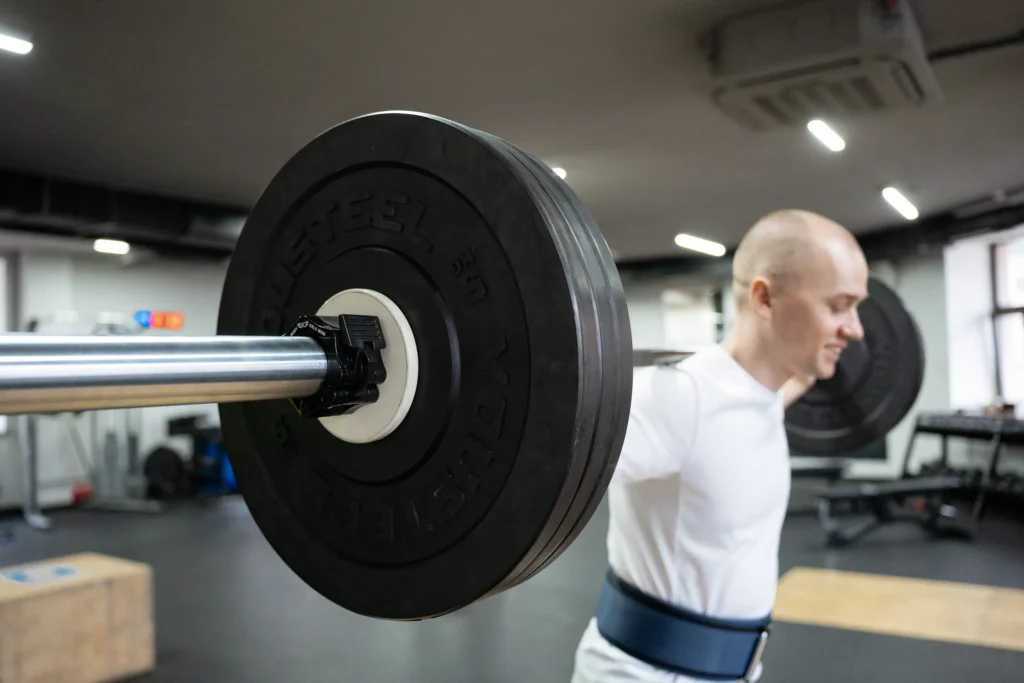
The Barbell Squat Jump Programming For Weightlifters
When programming barbell squat jumps for Olympic weightlifters, it’s important to consider the athlete’s individual needs and training goals. Here are some general guidelines for programming barbell squat jumps for Olympic weightlifters:
1. Frequency
Barbell squat jumps can be included in a weightlifting program 1-2 times per week.
2. Sets and Reps
For strength and power development, aim for 3-4 sets of 4-6 repetitions with a moderate to heavy weight. Rest for 2-3 minutes between sets.
3. Progression
Gradually increase the weight of the barbell as the athlete becomes stronger and more explosive. It’s important to progress slowly to avoid injury and ensure proper adaptation.
4. Timing
For younger and less experienced lifters it’s best to perform jump squats with weights earlier in the workout, when the athlete is fresh and can perform the exercise with good form and technique. Pro weightlifters mostly perform this at the end of the session.
5. Warm-Up
It’s important to warm up properly before performing barbell squat jumps to reduce the risk of injury. A dynamic warm-up that includes leg swings, lunges, and high knees can help to prepare the body for the exercise.
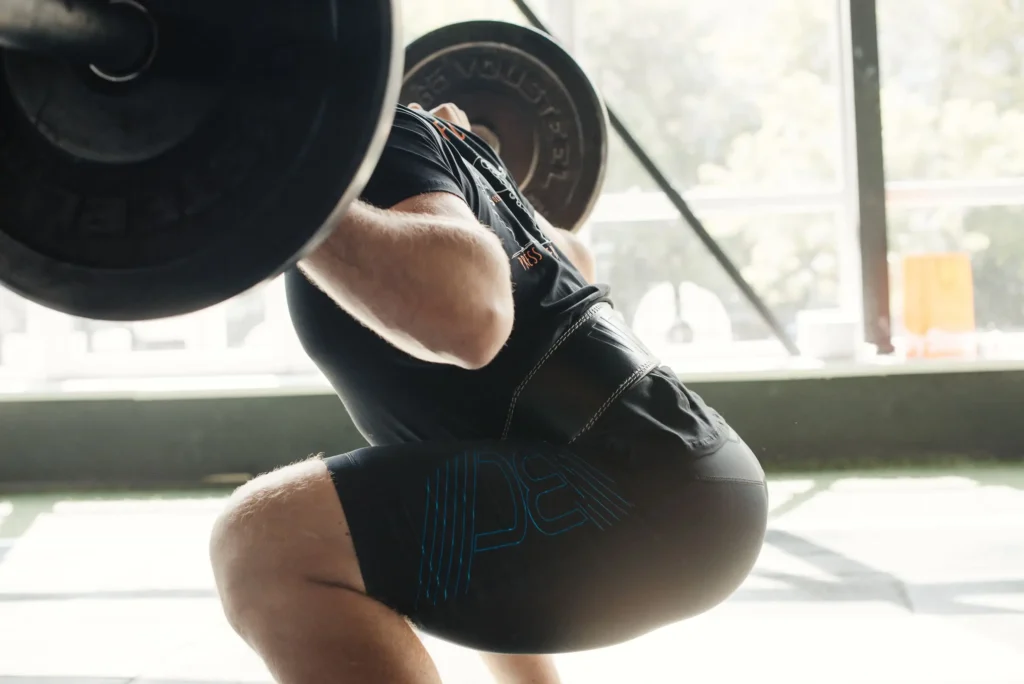
6. Supplementary Exercises
Barbell squat jumps can be paired with other plyometric exercises such as box jumps and depth jumps, as well as strength exercises such as squats and deadlifts, to create a well-rounded training program.
7. Rest and Recovery
Allow for adequate rest and recovery between workouts to avoid overtraining and reduce the risk of injury. It’s also important to prioritize proper nutrition, hydration, and sleep to support recovery and performance.
Common Mistakes When Performing The Barbell Squat Jump
1. Poor Form
Poor form and technique can increase the risk of injury and reduce the effectiveness of the exercise. Make sure to maintain good posture, keep the chest up, and avoid rounding the back.
2. Incorrect Foot Placement
Placing the feet too close together or too far apart can affect the athlete’s balance and reduce the effectiveness of the exercise. The feet should be shoulder-width apart, with the toes pointed slightly outward.
3. Insufficient Depth
Not squatting deep enough can reduce the effectiveness of the exercise and limit the range of motion. Make sure to squat down until the thighs are parallel to the ground or lower.
4. Insufficient Explosiveness
Not exploding upward with maximum force and power can reduce the effectiveness of the exercise. Make sure to explode upward as explosively as possible, pushing through the balls of the feet and driving the hips forward.
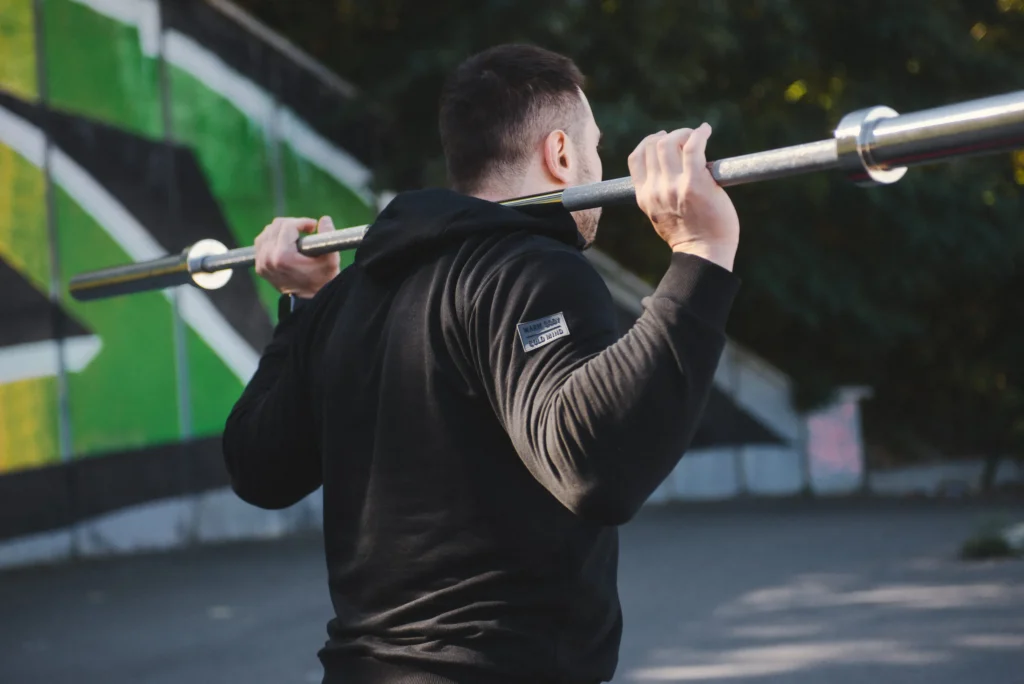
5. Overloading Weight
Using too heavy a weight can increase the risk of injury and reduce the effectiveness of the exercise. Start with a moderate weight and gradually increase as the athlete becomes stronger and more explosive.
The Barbell Squat Jump Variations
There are several variations of the barbell squat jump that can add variety to a weightlifting program and challenge the lower body muscles in different ways. Here are some barbell squat jump variations:
1. Box Jump Squats
Perform a box jump, landing in a squat position on top of the box. Jump down and immediately perform a barbell squat jump.
2. Single-Leg Barbell Squat Jumps
Perform barbell squat jumps on one leg at a time, alternating legs between sets.
3. Barbell Split Squat Jumps
Hold the barbell at the back of the shoulders and perform split squat jumps, switching legs between reps.
4. Barbell Jump Squats with Pause
Bar is at the back of the shoulders, perform a jump squat, pausing for 1-2 seconds at the bottom before exploding upward.
5. Barbell Jump Squats with Hold
Hold the barbell at the back of the shoulders and perform a jump squat, holding the half squat position while descending for 1-2 seconds before exploding upward.
These variations can be used to add variety and challenge to a weightlifting program, and to target different muscles in the lower body and upper body. It’s important to start with a moderate weight and focus on proper form and technique to avoid injury.
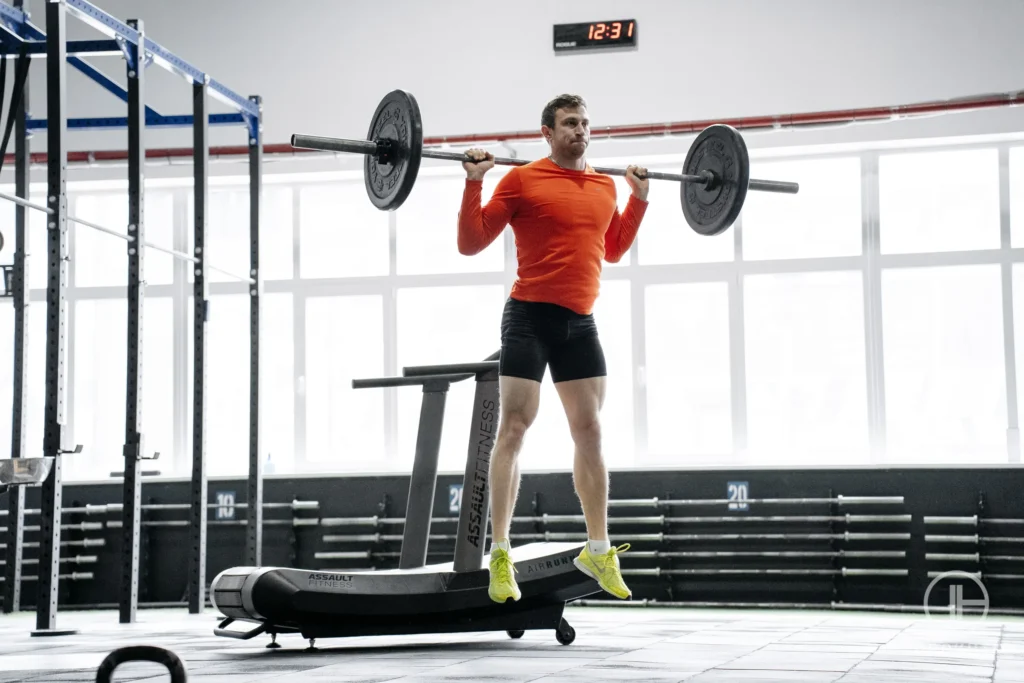
The Barbell Squat Jump Alternatives
While the barbell squat jump is a great exercise for developing explosive power and strength in the lower body, there are several alternatives that can be used to add variety to a weightlifting program. Here are some barbell squat jump alternatives:
1. Dumbbell Jump Squats
Hold dumbbells in each hand and perform a jump squat, exploding upward as high as possible.
2. Box Jumps
Jump onto a box or bench, landing in a squat position on top of the box. Step down and repeat for multiple reps.
3. Bulgarian Split Squats
Stand facing away from a bench or box, with one foot on the bench and the other foot on the ground. Perform a split squat, lowering the back knee down to the ground and then exploding upward.
4. Kettlebell Swings
Hold a kettlebell with both hands and perform a swinging motion, exploding upward with the hips and legs.
5. Broad Jumps
Stand with the feet shoulder-width apart and jump forward as far as possible, landing in a squat position.
6. Cleans
Use a barbell and perform a power clean, exploding upward and catching the bar in a front squat position.
7. Deadlift Jumps
Use a barbell and perform a deadlift, exploding upward and jumping at the top of the movement.
These alternatives can be used to add variety to a weightlifting program and challenge the lower body muscles in different ways.
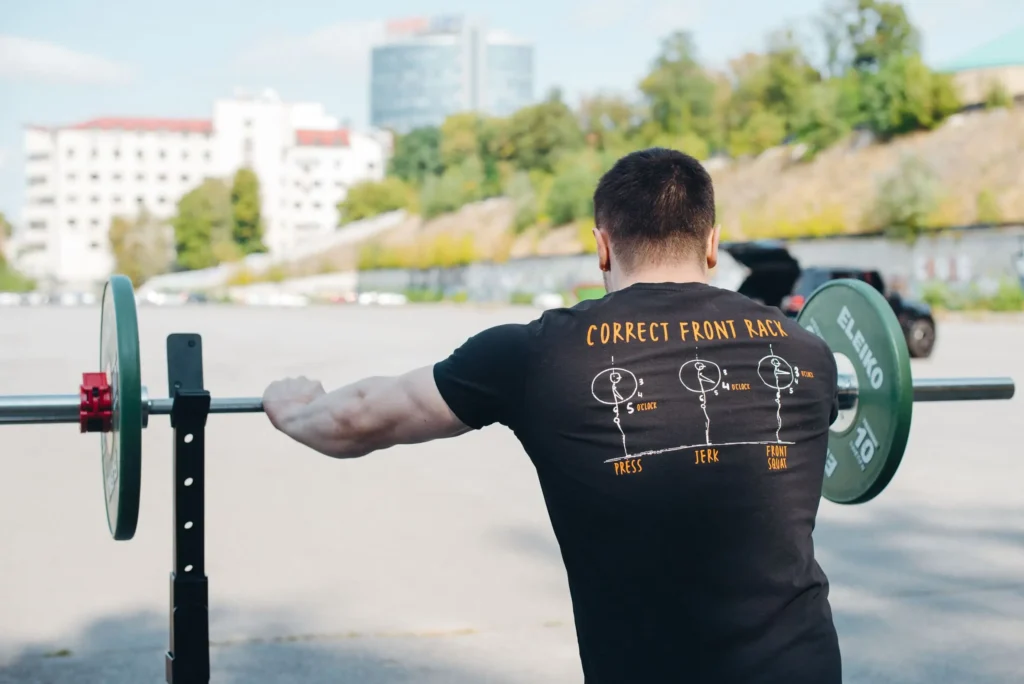
Who Needs To Perform Barbell Squat Jump?
Barbell squat jumps are an effective exercise for improving explosive power and strength in the lower body, which can be beneficial for a wide range of athletes and fitness enthusiasts. Here are some groups of people who could benefit from incorporating barbell squat jumps into their training:
1. Olympic Weightlifters
Barbell squat jumps can help improve the ability to explosively drive the barbell upwards during the snatch and clean and jerk.
2. Powerlifters
Barbell squat jumps can help improve leg drive during the squat and deadlift.
3. Sprinters and Jumpers
Barbell squat jumps can help improve explosive power in the legs, which is important for sprinting and jumping.
4. Team Sport Athletes
Barbell squat jumps can help improve power and speed on the court or field.
5. Fitness Enthusiasts
Barbell squat jumps can help improve overall lower body strength and power, which can benefit anyone looking to improve their fitness level.
The barbell squat jump is an effective exercise for developing explosive power in the lower body muscles, particularly the quadriceps, glutes, and calves. It can help to improve jumping ability, speed, and agility, which can be beneficial for sports such as basketball, volleyball, and track and field.
When performing the barbell squat jump, it’s important to use proper form and technique to avoid injury. The weight of the barbell should be appropriate for the athlete’s strength level and fitness goals. It’s also important to warm up properly and progress gradually to avoid injury and ensure proper adaptation.
Also Read:
Why Trust Us?
With over 20 years in Olympic weightlifting, strength training, nutrition coaching, and general fitness our team does its best to provide the audience with ultimate support and meet the needs and requirements of advanced athletes and professional lifters, as well as people who strive to open new opportunities and develop their physical capabilities with us.
By trusting the recommendations of our certified experts in coaching, nutrition, and sports training programming, as well as scientific consultants, and physiotherapists, we provide you with thorough, well-considered, and scientifically proven content. All the information given in the articles concerning workout programming, separate exercises, and athletic performance, in general, is based on verified data.
The product testing process is described in more detail here.
Author: Oleksiy Torokhtiy
Olympic Weightlifting Champion, PhD in Sport Science
Best Results: Snatch – 200 kg,
C&J – 240 kg
Oleksiy Torokhtiy is a professional athlete boasting 20 years of experience in Olympic weightlifting. With multiple European and World titles under his belt, he has showcased his prowess in two Olympic Games (Beijing 2008 and London 2012). Upon concluding his illustrious career, Oleksiy dedicated himself to coaching. By 2022, he had conducted over 200 weightlifting seminars worldwide. He is the visionary behind an international sportswear and accessories brand known for its motto, “Warm Body Cold Mind.” Additionally, he is an esteemed author and the creator of a series of training programs and eBooks.



Still have questions after reading our article? Unlock your full potential by engaging with our experts and community! Don’t hesitate — leave a comment below and Oleksiy Torokhtiy will provide a personalized answer and insights to help you reach your goals.